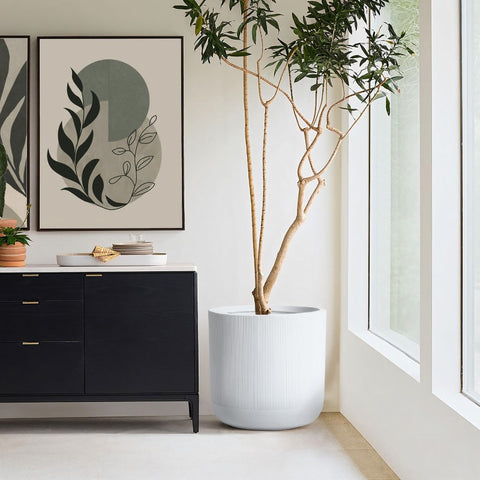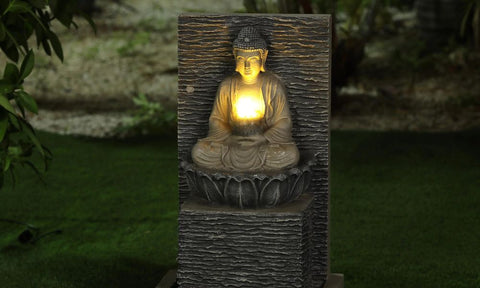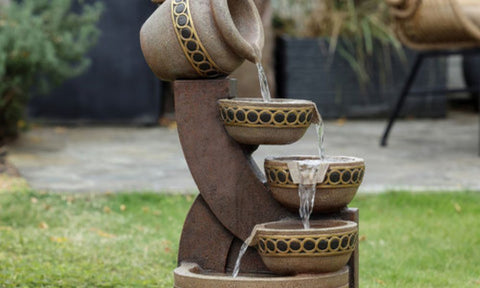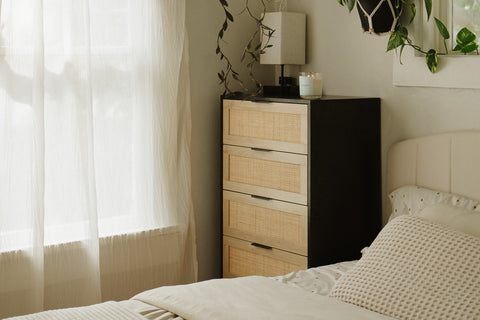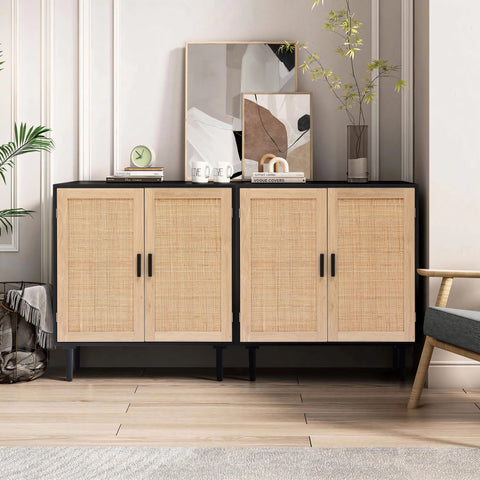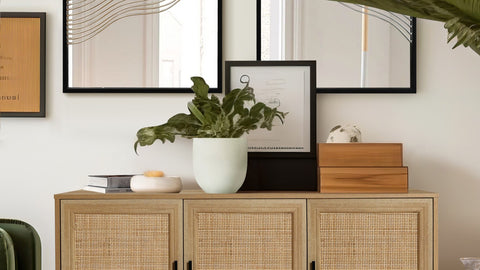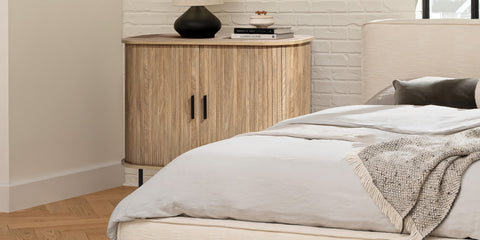Introduction
Bringing plants indoors is a great way to incorporate natural elements into your living space. Not only do indoor plants add beauty and visual interest, they offer a number of benefits as well. Having plants inside has been shown to reduce stress, improve air quality, increase productivity, and even boost mood. With so many positives, it's no wonder more and more people are looking to bring the outdoors in.
When choosing plants for indoor spaces, there are a few key things to consider. First, think about the size and lighting of the space you want to put them in. Certain plants do better in bright, sunny spots while others thrive in lower light. Measure the area to make sure your plants will fit comfortably without overcrowding.
Next, factor in your personal style and interior décor. A lush, overflowing jungle vibe pairs well with bohemian spaces, while minimalist, succulent-filled planters fit right into modern homes. There are indoor plants to match every aesthetic, so pick options that enhance your existing design.
You’ll also want to take into account your climate and conditions. Plants native to your region typically adapt better indoors. And know that while some plants like humidity, others may require more arid environments. Picking plants suited to the conditions inside your home will help them thrive.
With the right selections and proper care, growing plants indoors can be simple, fun and rewarding. This guide covers everything you need to know to successfully incorporate living greenery into your interior spaces. Let's get started bringing the outside in!
Measure Your Space
Before bringing outdoor plants inside, it's important to take measurements of the area you plan to place them. This will help determine what size and type of plants will work best.
Consider the size and lighting of the area. Measure the length, width and height of the space. This will give you an idea of what size planters can fit and how tall the plants can be without crowding the area.
It's also good to measure your windows and proximity to natural light. Most houseplants need adequate sunlight to thrive indoors. Southern and western facing windows provide the most light. You'll want to select plants that match the light levels of your space.
Make sure to account for furnishings or decor when measuring. Leave enough room for plants to be accessible and allow you to care for them. Measure a few times to be certain of the dimensions. This will prevent purchasing plants or planters that ultimately won't fit the area.
Having accurate measurements of your indoor space will make it easier to choose the right plants and planters to incorporate outdoor living inside your home.
Match Your Style
Take stock of your interior design style before choosing plants and planters to bring indoors. The containers you select should complement the existing decor.
- Modern: Clean lines and minimal, geometric planters work well in modern spaces. Opt for succulents or air plants in concrete, ceramic, or glass containers.
- Traditional: Ornate planters like decorative urns or carved wood boxes match traditional decor. Flowering plants like orchids or miniature roses look lovely.
- Farmhouse: Rough-hewn wood planters and vintage tin buckets have a rustic farmhouse feel. Herbs and ivy cascade nicely over the sides.
- Contemporary: Mix materials with a sleek but organic look. Try a living wall planter, or set air plants in geometric concrete holders or modern wire frames.
- Transitional: Bridge two styles with your planters. A distressed white ceramic pot looks fitting in both farmhouse and modern environments.
No matter your interior design style, select plants and planters that enhance your existing space. Let your personal taste shine through in your plant choices.
Check for Allergies
Bringing plants indoors can cause allergic reactions for some people. It's important to check if anyone in your household is allergic to common houseplants before making your selections. Some of the most common houseplant allergens include:
- Mold - Mold can grow on the soil of houseplants. Make sure to choose planters with drainage holes and do not overwater plants.
- Pollen - Some flowering plants like orchids release pollen into the air which can trigger allergies.
- Sap - The sap from plants like ficus and fig trees can cause skin and respiratory irritation.
- Fragrances - Strongly scented plants like gardenias and jasmine can provoke reactions in those with scent sensitivities.
If someone in your home does have plant allergies, there are ways to minimize reactions:
- Place plants in rooms that allergic residents do not frequent as often.
- Use high efficiency filters in heating/cooling systems.
- Choose low-pollen varieties and plants with waxy leaves which trap pollen.
- Keep plants dust-free by gently wiping leaves.
- Use fans to improve air circulation.
With some planning and care, you can help ensure your indoor garden doesn't cause allergy issues. Monitoring for any reactions and removing problematic plants can also help make your indoor oasis enjoyable for everyone.
Select Your Plants
When selecting plants for indoor living spaces, go for varieties that are low maintenance and hardy. Here are some great options to consider:
Succulents
Succulents are ideal for beginners because they require very little care. They thrive on neglect, only needing water every 2-3 weeks. Popular succulents include:
- Jade Plant - An easy to grow succulent with thick stems and oval leaves. Tolerates low light.
- Snake Plant - Features upright sword-like leaves. One of the toughest houseplants available.
- Aloe Vera - Known for its healing gel. Prefers bright light. Allow soil to dry between waterings.
- Echeveria - Rosette-forming plants with ruffled, colorful leaves. Great for containers.
Air Plants
Air plants are epiphytes, meaning they get moisture and nutrients from the air and require no soil. Simply mist them a few times per week and soak occasionally. Choices include:
- Tillandsia ionantha - Feathery green leaves with vibrant pink-purple blooms.
- Tillandsia xerographica - Striking silver foliage. Native to Mexico and Central America.
- Tillandsia juncea - Forms a tight rosette shape. Produces bright red-pink blooms.
Other Low Maintenance Options
- Pothos - Trails beautifully and thrives on neglect. Tolerates low light.
- ZZ Plant - Glossy, oval leaves. Tolerates low light and irregular watering.
- Peace Lily - Produces white blooms. Indicates when it needs water by drooping leaves.
- Philodendron - Vining plants with heart-shaped leaves. Withstands beginner mistakes.
Choose plants that match the light levels in your space and your personal care commitment. Start with just a few hardy varieties while you get the hang of indoor gardening.
Choose Planters
When bringing plants indoors, it's important to select planters that complement your interior design style and meet the needs of your plants. Consider the following when choosing planters:
Material
- Terracotta - Terracotta pots are porous, allowing air and moisture to pass through. This can help prevent root rot in some plants. Terracotta comes in various colors and styles to match different decors.
- Ceramic - Glazed ceramic planters are non-porous but drain well. Unglazed ceramic is porous like terracotta. Ceramic planters are durable and available in many colors and styles.
- Wood - Wood planters can provide a natural, rustic look. Ensure the wood is sealed to prevent rotting from moisture. Wood allows some air exchange like terracotta.
- Mgo - Mgo is a new type of material starting to be used on outdoor products for its excellent capability in enduring outdoor environments and remaining light-weight and toughness at the same time.
- Plastic - Plastic planters are inexpensive, lightweight and come in many colors. Make sure plastic planters have drainage holes.
- Metal - Intricately designed metal containers work well for indoor plants. Use plastic liners inside to prevent root damage from excess moisture.
Drainage
Ensure your planters have holes for drainage. You can add rocks, pebbles or pieces of broken terracotta at the bottom to further assist drainage before adding potting soil. This prevents roots from sitting in water, leading to rot.
Style
Select planters that match your interior design style - modern, farmhouse, traditional, etc. Simple ceramic or plastic pots work well for modern spaces while ornate urns or woven baskets complement traditional rooms. For a natural look, use terracotta or wood planters. Let your planters complement and enhance your decor.
Prepare for Transplanting
When it's time to move your plants indoors, you'll need to carefully transplant them into their new planters. Here are some tips for a smooth transition:
Gather Needed Supplies
Make sure you have the necessary supplies on hand before getting started:
- Potting soil specifically formulated for indoor plants. Outdoor soil can contain pests and molds.
- Gardening gloves to protect your hands
- Small gardening shovel and/or trowel
- Pruning shears to trim any damaged roots or stems
- Spray bottle filled with room temperature water
- Clean rag or paper towels
Carefully Remove from Current Pot
Start by watering the plant well the day before transplanting. This helps loosen the roots.
When ready, gently squeeze and massage the sides of the pot to loosen the soil and roots. Carefully tip the pot upside down while supporting the base of the plant. If needed, gently tap the pot to release.
Try to keep as much soil around the roots as possible to minimize shock. Use your trowel or fingers to gently loosen any circling roots at the bottom and sides of the root ball.
Know How to Handle Root Balls
The size of the root ball determines how to proceed:
- For small plants, you can handle the root ball directly, moving it from the old pot into the new container.
- For larger root balls, you may need to place the plant on a tarp or lawn to work on removing the pot without everything falling apart. Or slide the root ball into a larger temporary container for transport.
- Overgrown root balls can be trimmed by up to 1/3 to fit into planters. Make clean cuts with pruning shears on any protruding roots.
Work carefully to keep the root ball intact as much as possible. Damaging the roots can shock the plant and set back its transition and growth.
Transition Plants Indoors
When bringing plants indoors from the outdoors, it's important to gradually transition them to get accustomed to the new environment. Here are some tips for a smooth transition:
- Gradually acclimate to indoor lighting and humidity.** If moving a plant from bright sunlight into a dimly lit indoor space, do it in stages over 7-10 days. Start by bringing it into partial sun or a bright window for a few hours a day, slowly increasing the time inside each day. This gives the plant time to adjust its photosynthesis and growth patterns to less light.
- Check soil moisture frequently at first.** Outdoor plants are used to greater air circulation and drainage. Indoors, it's easier for soil to remain wet for too long. Check moisture daily and allow the top inch of soil to dry out between waterings. Ensure the pot has drainage holes to prevent over-watering.
- Ensure proper watering and drainage.** Indoor air tends to be drier than outdoors. Monitor for any drooping or wrinkling of leaves, which can indicate under-watering. Water thoroughly until it drains from the bottom, but don't let the pot sit in a drainage tray with water in it. Empty the tray after watering.
With some attentive care during the initial transition, you can successfully incorporate outdoor plants into your indoor living spaces. Gradually introduce them to their new home, provide adequate moisture without over-watering, and give them proper light. They'll soon adjust and thrive indoors.
Maintain Your Plants
Proper care and maintenance is crucial for keeping your indoor plants healthy and thriving. Here are some key tips:
- Watering - Watering needs can vary greatly depending on the type of plant, size of container, sunlight exposure, and climate. Get to know your plants and soil moisture levels. As a general rule, it's better to underwater than overwater. Allow the soil to partially dry out between waterings.
- Light - Most indoor plants need bright, indirect light to mimic their natural outdoor habitat. Know the light requirements of your specific plants. Supplement with grow lights if needed. Rotate plants periodically so all sides get evenly lit.
- Fertilizing - Applying a balanced liquid fertilizer every 2-4 weeks during the growing season will provide nutrients. Slow release fertilizer spikes can also be used. Follow label directions carefully.
- Pruning - Prune off any dead or damaged leaves, stems and flowers to maintain an attractive appearance and promote new growth. Use clean, sharp pruners. Avoid excessive pruning.
- Pest Control - Inspect regularly for common pests like spider mites, mealybugs and aphids. Try methods like hosing off plants, using insecticidal soap or neem oil before turning to chemical pesticides. Isolate any infested plants.
Keeping a consistent routine with water, light, fertilizer and inspections will go a long way in keeping your indoor plants healthy and thriving within your living space. Adjust as needed based on each plant's requirements.
Enjoy Your Indoor Oasis!
After following the steps to carefully select, prepare, and transition your plants indoors, it's time to sit back and enjoy your living oasis. Having fresh greenery in your home provides so many benefits beyond just aesthetics. Studies show that being around plants can reduce stress, improve productivity, increase happiness and satisfaction, and even improve air quality.
Seeing your plants thrive in their new indoor environment will provide a great sense of accomplishment and pride. Make sure to continue providing them with proper care and maintenance. Check soil moisture regularly, fertilize when needed, and prune back any damaged leaves or stems. With the right balance of sunlight, water, and care your plants will continue flourishing inside.
If you ever need inspiration, search for images of beautiful indoor plantscapes online or visit local botanic gardens and nurseries. There are always new varieties to discover and creative ways to incorporate plants into your home. We'd love to hear your experiences growing an indoor oasis! Share photos of your indoor garden setup and plant care tips with us and others looking to welcome more green into their home.

